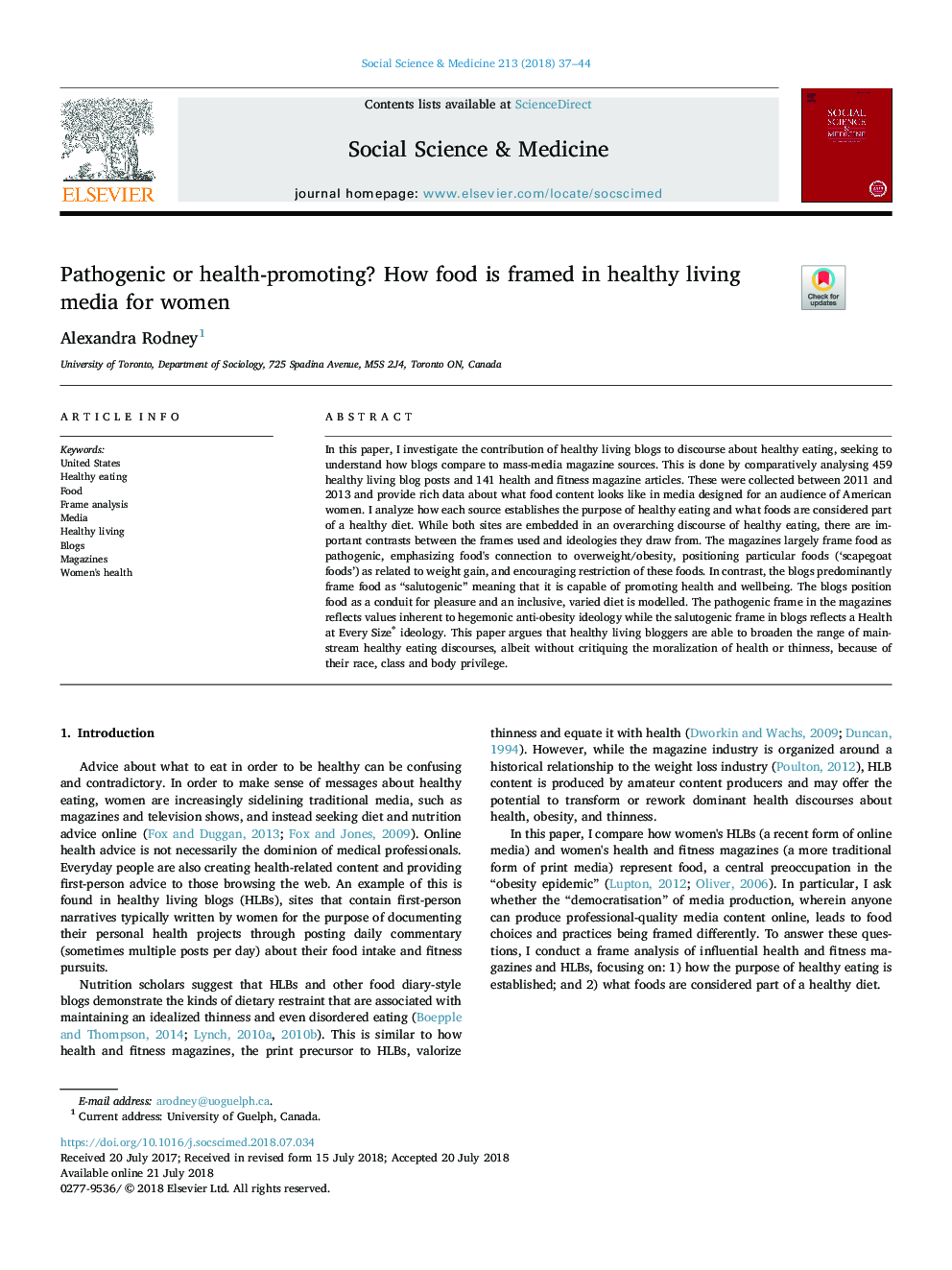| Article ID | Journal | Published Year | Pages | File Type |
|---|---|---|---|---|
| 7327174 | Social Science & Medicine | 2018 | 8 Pages |
Abstract
In this paper, I investigate the contribution of healthy living blogs to discourse about healthy eating, seeking to understand how blogs compare to mass-media magazine sources. This is done by comparatively analysing 459 healthy living blog posts and 141 health and fitness magazine articles. These were collected between 2011 and 2013 and provide rich data about what food content looks like in media designed for an audience of American women. I analyze how each source establishes the purpose of healthy eating and what foods are considered part of a healthy diet. While both sites are embedded in an overarching discourse of healthy eating, there are important contrasts between the frames used and ideologies they draw from. The magazines largely frame food as pathogenic, emphasizing food's connection to overweight/obesity, positioning particular foods ('scapegoat foods') as related to weight gain, and encouraging restriction of these foods. In contrast, the blogs predominantly frame food as “salutogenic” meaning that it is capable of promoting health and wellbeing. The blogs position food as a conduit for pleasure and an inclusive, varied diet is modelled. The pathogenic frame in the magazines reflects values inherent to hegemonic anti-obesity ideology while the salutogenic frame in blogs reflects a Health at Every Size® ideology. This paper argues that healthy living bloggers are able to broaden the range of mainstream healthy eating discourses, albeit without critiquing the moralization of health or thinness, because of their race, class and body privilege.
Keywords
Related Topics
Health Sciences
Medicine and Dentistry
Public Health and Health Policy
Authors
Alexandra Rodney,
